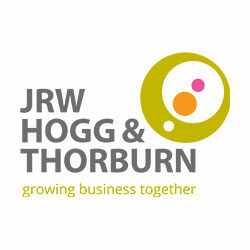December Q&A
Is there a new workplace pension scheme?
Q. We’ve heard that employers are now able to enrol their employees into a different type of workplace pension scheme. Is this correct?
A. Previously, employers were only able to offer their employees defined contribution (DC) and defined benefit pension schemes. However, following changes brought about by the Pension Schemes Act 2021 they can now additionally offer staff collective defined contribution (CDC) pension schemes. In a CDC, the employer and its employees contribute to a collective fund from which individual retirement incomes are then drawn down; in a DC model employees pay into their individual pot. CDCs have the potential (but no guarantee) to provide improved retirement returns for employees and more predictable costs for employers. Currently, employers can have single or connected employer CDC schemes, but the government is looking at expanding pensions models to include multi-employer CDCs.
Employers are now able to offer staff collective defined contribution pension schemes if they wish. These collective pension funds have the potential (but no guarantee) to provide improved retirement income for staff and more predictable costs for employers.
Do we charge VAT on export via agent?
Q. We have agreed a deal to sell equipment to a business customer in France. However, the customer’s agent will collect the goods from our UK warehouse and take them to France. Does this mean we should charge 20% UK VAT as we will not be the exporter?
A. This type of arrangement is known as “indirect export” but there is still scope for zero-rating as long as certain conditions are met. Firstly, the export deal must qualify as an export of commercial goods, i.e. relevant to a business-to-business sale. But, most importantly, your customer must forward the proof of export documentation to you within three months of them collecting the goods from your UK warehouse.
The standard of proof is high because HMRC regards indirect exports as a high-risk transaction. HMRC suggests that you collect an extra 20% deposit from your overseas customer, which will be refunded when they forward the evidence to you. If they don’t provide the evidence, you can then use this deposit to pay VAT to HMRC as you have effectively made a domestic sale in the UK.
Since 1 January 2021, goods sold from GB to an EU country are classed as exports.
Are walking tour fees subject to VAT?
Q. Our photography business is already VAT registered and we are about to expand our activities and start offering walking tours around Edinburgh, charging a fee to each individual who comes on the walks. Should we charge VAT on these fees? I understand that we would not charge VAT on fees paid by overseas tourists.
A. The fact that some of the walkers will be from overseas is irrelevant. You are providing what is classed as a “performance service”, where the VAT charge depends on where it takes place. In other words, UK walks mean they are subject to UK VAT.
There is no zero-rating or VAT exemption in the legislation for walking tours and you must therefore account for VAT on the fees. However, you might want to consider organising the tours in a separate legal entity to your VAT-registered photography business. This should be practical because the two activities are very different. It also assumes that your annual sales from the walks will be less than the £85,000 registration threshold.
What is the correct rate for conversion?
Q. I am a VAT registered builder and have been asked to quote for work on a project that will convert two terraced houses into six multiple occupancy dwellings. My understanding is that the work will be subject to 5% VAT but I am not sure. Can you confirm, please?
A. The basic principle with the 5% rate for conversion work is that a different number of dwellings must be created at the end of the project, compared to the beginning. For example, a detached house converted into two semi-detached houses – or vice versa – would qualify for 5% VAT on building work. The change in number can be up or down. The good news is that your project will qualify because it is effectively converting single household dwellings into multiple dwellings. Per VAT the 5% rate will also extend to building materials you supply as part of your work.
Bad debt relief or credit note – which is better?
Q. I am worried that one of my customers is about to go under owing me a lot of money. I’ve agreed to write off part of the debt if the balance is paid immediately. How soon can I get a refund of the VAT I’ve paid on the bad debt?
A. Unless you use the cash accounting scheme (CAS) you must account to HMRC for VAT you charge your customers on the return covering the date when you made the sales and not when your customer has paid you. You can eventually reclaim any VAT on sales you’ve not been paid for but there’s more than one way to do this.
There are two methods for recovering VAT you’ve already accounted for on a sale if you expect not to be paid or only partly paid: either claim bad debt relief or issue a credit note. Bad debt relief can only be made after six months whereas a credit note can be issued at any time and so speed up VAT recovery.
